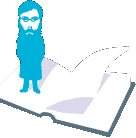| Syllabus
(1) Course objectives (general)
To develop copy editing skills in a technical manuscript in terms
of (a) translation errors made from Chinese to English and (b) general
writing style errors.
To organize and write a research paper or work report in a time-efficient
manner.
(2) Course objectives (specific)
How can I revise my own paper by eliminating general writing style
and Chinese-English colloquial errors?
What is the relation between technical writing and project time?
How can I identify my reader's interests to make the paper more
user friendly?
(3) Course texts
An Editing Workbook for Chinese Technical Writers
by Ted Knoy
Effective Work Proposals for Chinese Technical Writers by Ted Knoy
(4) Course materials
(4) Suggested readings
technical editing
- Substance&Style: Instruction and Practice in Copyediting
by Mary Stoughton
- Style: Ten Lessons in Clarity and Grace by Joseph Williams
- Technical Editing by Lola Zook
curriculum text
- How to Write and Publish Engineering Papers and Reports by
Herbert B. Michaelson Second Edition
- Technical Writing and Professional Communication for Nonnative
Speakers of English by Thomas N. Huckin and Leslie A. Olsen International
edition
- How to Write and Publish a Scientific Paper by Robert A. Day
Fourth edition
- The Scientist's Handbook for Writing Papers and Dissertations
by Antoinette M. Wilkinson
- Handbook of Technical Writing by Charles T. Brusaw Fourth edition
- Technical Writing by John M. Lannon Sixth edition
- Effective Technical Communication by Anne Eisenberg
grammatical or style reference
- The Mc-Graw Hill Style Manual: A Concise Guide for Writers
and Editors Edited by Marie M. Longyear
- A Manual for Writers of Term Papers, Theses, and Dissertations
by Kate L. Turabin Fifth edition
for non-native speakers of English
- Writing Up Research: Experimental Research Report Writing for
Students of English by Robert Weissberg and Suzanne Buker
- A Handbook for Technical Communication by Jacqueline K. Neufeld
- English Oral Presentations for Chinese Technical
Writers by Ted Knoy
- Principles and Techniques of English Oral Presentations: A Guidebook
for Chinese Managerial and Technical Professionals by Chia-Jung
Tsai
- Technical Contacts: Materials for developing listening and speaking
skills for the student of technical English by Nick Brieger and
Jeremy Comfort
- Learn to Listen; Listen to Learn: Advanced ESL/EFL Lecture Comprehension
to Develop Note-taking Skills by Roni S. Lebauer
(5) Course homework
Written assignments will be sent for editing to the instructor
via e-mail (tedaknoy@ms11.hinet.net)
as an attached file in Microsoft Word format. The instructor will
edit the files using the editing tool inside of the "Tools"
box of Microsoft Word and, then, return the edited files to the
student. During the final week of the course, the student will submit
the final assignments on a 3.5 size diskette(Word format).
(6) Norms for class assignments
The instructor assesses the above assignments on the basis of the
following norms:
| Structure |
Each class assignment must be written according
to the structure taught in class. |
| Style |
Each class assignment must be written in clear
and concise English, omitting any grammatical, general writing
style, or Chinese colloquial errors. |
| Usability |
Each class assignment must not only have a
particular audience in mind, but attempt to link the technical
information with the particular reader's interest(s). |
|
